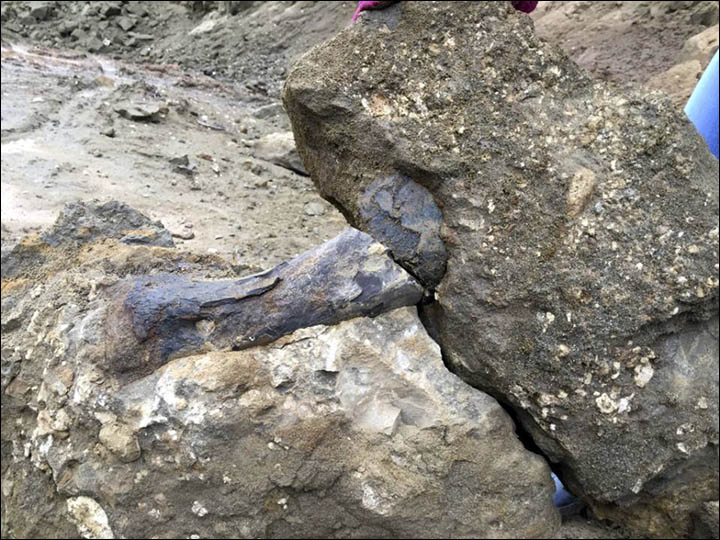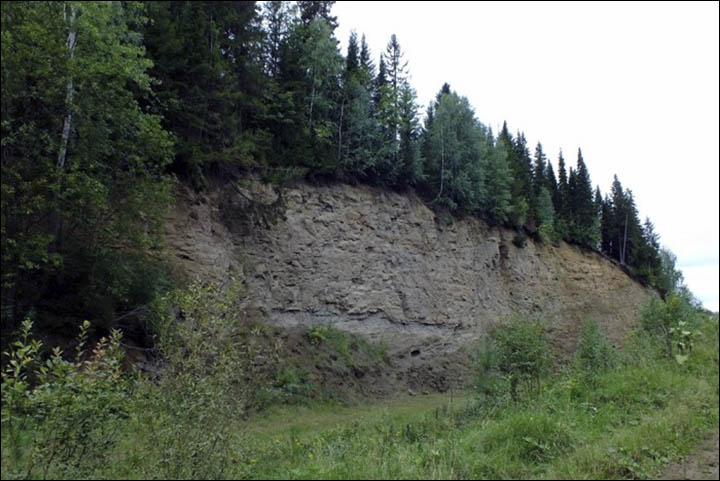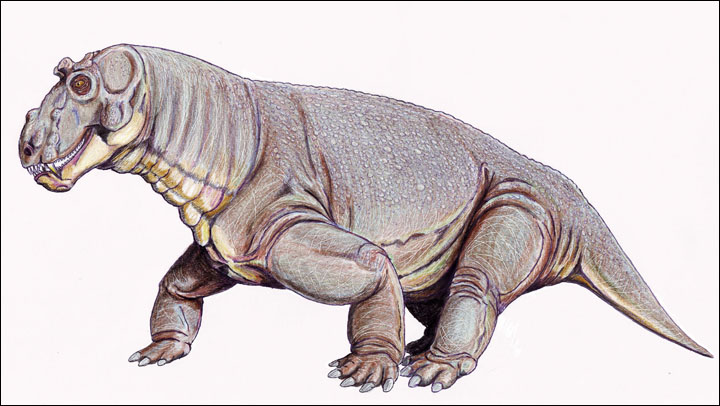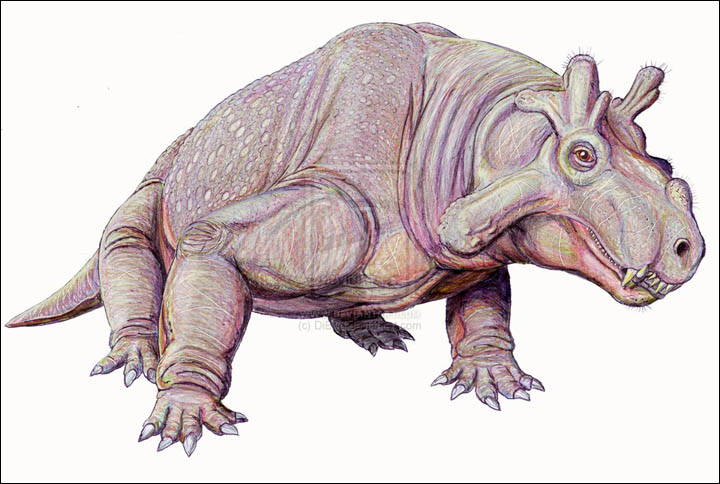The skull of an animal that lived more than 260 million years ago has gone on display at a museum in Australia.
The South Australian Museum shared a picture of the Estemmenosuchus mirabilis, otherwise known as the “horned crocodile” on its Facebook page, where it has wowed viewers from around the world.
A spokesperson for the South Australian Museum told Newsweek: “Estemmenosuchus were omnivorous—plant and meat eaters—therapsids in the group Dinocephalia. They were clumsy–looking animals, with a sprawling posture, growing up to four metres in length, making them one of the largest animals of their time.”

The estemmenosuchus mirabilis or “horned crocodile” skull. It’s now on display at a museum in Australia. Israel Baldago Photography
The most distinctive feature of the horned crocodile is the moose-like horns, which are believed to have been used in rutting, much like modern male deer.
The warm-blooded species were found in the Perm region of Russia and have become a stand-out part of the museum’s Six Extinctions exhibition.
“Premiering at the South Australian Museum, Six Extinctions explores the big five mass extinctions throughout Earth’s history and looks at the current extinction crisis, the sixth extinction, and what we can do to help,” the museum said.
The exhibition, through February 5, 2023, features some of the biggest predators of each geological period, including a life-sized cast of the largest Tyrannosaurus rex ever found.
Photographer Israel Baldago was tasked with capturing the Six Extinctions exhibition and is behind the incredible pictures of the horned crocodile and other fossil replicas on display. “The original fossils are too fragile and/or heavy to safely put on show,” explained the museum.

Baldago told Newsweek: “I was able to see the exhibition before the public opening and it was amazing to see a life-size replica of dinosaurs like Scotty the T-Rex from Saskatchewan, the largest intact skeleton to be found, and also of creatures like the crowned crocodile and some of Australia’s megafauna. It was also quite sobering to learn about the 5 major extinction events, and the underlying message of conservation as we hurtle towards a 6th extinction event.”
In January 2022, a team of scientists from the University of Hawaii published a comprehensive study of Earth’s biodiversity that supports the idea we are currently in the midst of a human-caused sixth extinction event.
While some scientists fall short of suggesting that the world is experiencing that, the lead author of the study, Robert Cowie, said: “Drastically increased rates of species extinctions and declining abundances of many animal and plant populations are well documented, yet some deny that these phenomena amount to mass extinction.”
The exhibition features a a life-sized cast of the largest Tyrannosaurus rex ever found, left, and a picture of the exhibition poster, right. It runs through February 5, 2023. Israel Baldago Photography
The paper estimated that since the year 1500, the Earth could have already lost between 7.5 percent and 13 percent of 2 million known species.
It was the inclusion of the crowned crocodile that really impressed photographer Baldago. He said: “I almost walked past it until I realized what it was. Often hearing about such obscure dinosaurs is left to the imagination or to sketches, but seeing the skull in such great condition really helps with being able to visualize how this creature may appear in real life – it’s amazing to think that this creature once lived on earth hundreds of millions of years ago. Absolutely fascinating stuff.”
Scientists found the collarbone and a scapula of an early omnivorous therapsid best known for horns shaped like a moose’s antlers. Picture: philip72
Fossilised bones found on a steep slope of Kokul mountain, 475 kilometres northwest of Yekaterinburg, have been identified as belonging to this lugubrious creature which walked the planet 267 million years ago, in the Middle Permian era.
Scientists found the collarbone and a scapula of an early omnivorous therapsid best known for horns shaped like a moose’s antlers. Head of the Museum of the Permian Geological Period Konstantin Dobryanskikh, in Perm, said: ‘We found the fragments of the skeleton on April 19.’

The fossilised bones were found on April 19 and have been identified as belonging to this lugubrious creature which walked the planet 267 million years ago, in the Middle Permian era. Pictures: Konstantin Dobryanskikh
While this area is rich in fossils, it is the first time the prehistoric ‘crowned crocodile’ has been located here, and it is seen as an exciting discovery potentially leading to new knowledge about this long-gone species.
‘To our surprise, we saw a fragment of the humerus,’ he said. ‘Mountain Kokui is known for finds of large numbers of fossilised Permian conifers, yet the remains of dinosaurs had not been found there before. The hope is that there is a full skeleton.’


Mountain Kokui located near the Ochyor town is known for finds of large numbers of fossilised Permian conifers, yet the remains of dinosaurs had not been found there before. Pictures: The Siberian Times, Natalya Klyaksina
Two species of this idiosyncratic creature have been identified – Estemmenosuchus uralensis and Estemmenosuchus mirabilis, both from the Perm region of the Urals. They differ in size, shape of the skull, and shape of the horns.


Estemmenosuchus uralensis (top) and Estemmenosuchus mirabilis (bottom). Pictures: Dmitry Bogdanov
It had a ‘sprawling posture and could reach a body length of more than 3 metres (10 ft) – with a large head. The skull was ‘long and massive, up to 65 cm (26 in) in length’.
There were several sets of large horns growing upward and outward from the sides and top of the head.